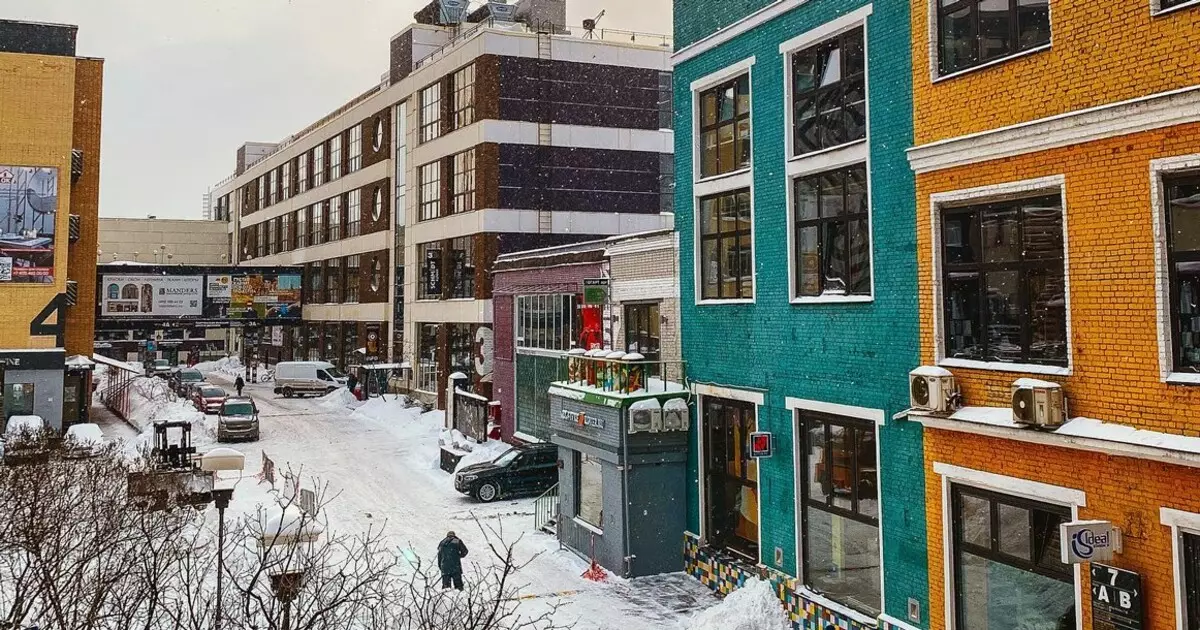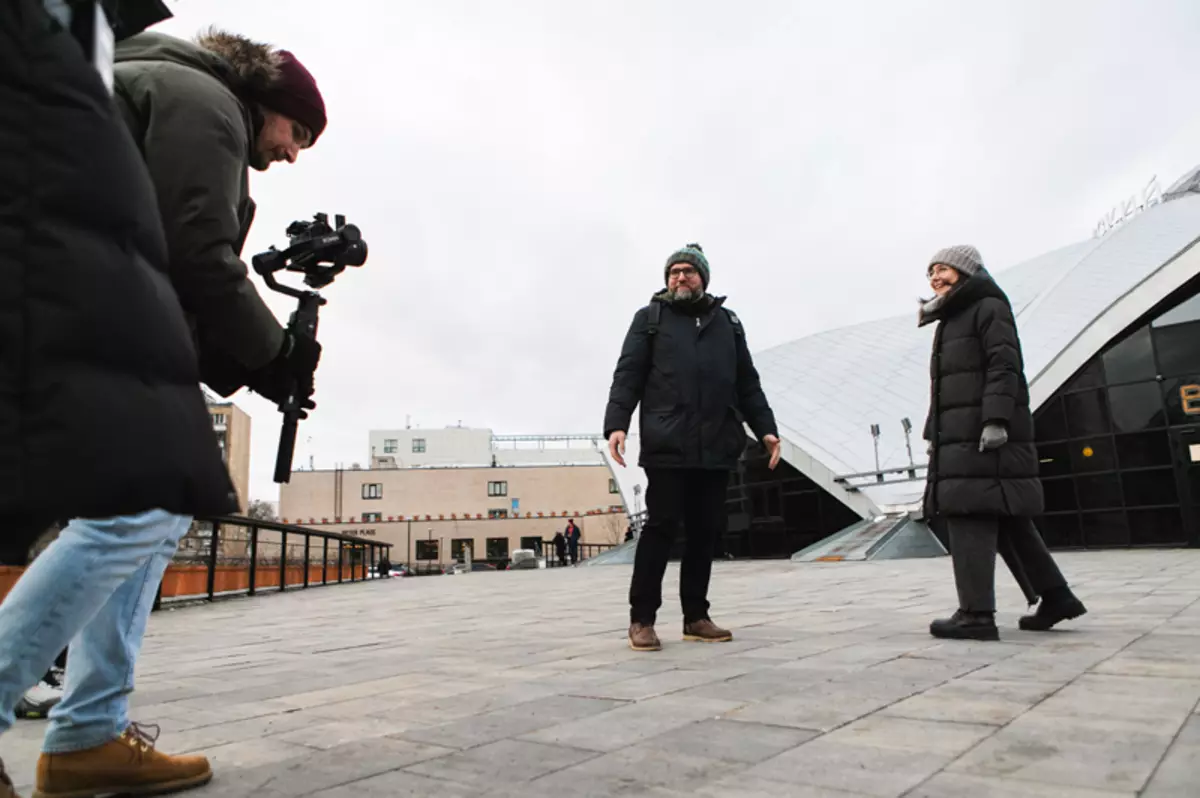
When they say about urbanistics, then often thanks to 3D pictures are pedestrian streets with tiles instead of asphalt, which are moving happy people with cups of coffee. Or they sit on the benches, or at the cafe table. At the same time, no one works and no one hurries anywhere. It is clear that these are stereotypes. Nevertheless, it is often these stereotypes thoughtlessly copy in projects throughout Russia.
The Moscow Details project of the Moskvich Mag edition made an opportunity to see and figure out what urbanism is, to figure out how many different public spaces work. Moreover, my curators were made by the architect of Wowhaus Bureau Mikhail Kozlov and the historian of architecture and urban planning Alexander Kmeul, who showed the space themselves, and told about their transformation.
The first in my list was Gorky Park, from which only 10 years ago, and the modern history of urban transformations in Moscow began. By this time, it was the classic post-Soviet Park of Culture and Leisure, in which the number of cafes and restaurants was added from the new, and all Soviet would noticeably dilapidated. Smoking skewers, not very safe rides and rental boats - here, actually, and the whole set, besides, the entrance was paid. No one in mind did not have to visit him. The changes here began in 2011, with the arrival of the new director of Sergei Kapkova Park, which was then headed by the Department of Culture of Moscow. It is with his activities, as well as with the projects of the Wowhaus Bureau Dmitry Likin and Oleg Shapiro, the transformation of the Moscow public spaces is largely connected.
In the park of Gorky, wooden embankments appeared with descent to Moscow river and ponds, street furniture - not only the usual benches, but also hammocks, sun beds, even puffs, and still pavilions, in which not only cafes opened (replaced notorious skewers), but children's , educational, sports sections. Then the Museum of Modern Art "Garage" opened here.

The park was filled with life, events, impressions, and for various ages and interests. Of course, in March, which this year in Moscow was incredibly snowy, it is difficult to appreciate this life. The last few years before the Park is not a problem of attracting visitors, but, on the contrary, containing their flow, which is solved through the reconstruction of district parks and squares. Early spring, wandering among snowdrifts height into human growth, it is difficult to assess and present this life. But the roller is full of people and proves that there is life here in the summer, and in winter.
The Gorky Park appeared continued - the Crimean Embankment. Actually, the embankment existed before that, it was simply busy with a highway, now she became transitional. Again, on the project, Wowhaus, the embankment was completely transformed - from asphalt scored a fountain, "grown" the green hills, finally a full-fledged access to the river. Here it is not separated by cars, as almost everywhere in Moscow. The image of the park of Gorky and the Crimean embankment began to replicate throughout Russia.
Another layer of Moscow urbanism is the reconstruction of old buildings, adapting them to modern functions, filling with new meanings. We are talking about Soviet architecture, and about pre-revolutionary. So, the Danilovsky market is a beautiful modernist building of the 1980s with a very interesting dome, due to which the market is sometimes taken for the circus. Danilovsky, like Gorky Park, also became a pioneer. From the post-Soviet market, it turned into a modern public space with numerous grocery shops, cafes and restaurants. Actually, now the market is not just about food, but about emotions - from a pleasant communication with friends in a restaurant, new gastronomic impressions, a successful purchase of products. It seems that this market is also a product, but under Dome Danilovsky changed all - sounds, smells, counters, people. It's time to eat and comprehend impressions. Today, such a format in Moscow is already familiar, the old Soviet markets are reworked, build new buildings and refer to their markets, or foodmarkets.
Another address is the ArtPlay design center, it covers the territory and building of the former instrument-making plant "Manometer". Artplay is about architecture and interior design, architects, designers, furniture suppliers, light, finishing materials are sitting here, and educational centers. It is important that the old buildings are preserved here and put in order, many facades received bright graffiti. By the way, industrial buildings due to high ceilings and open layout are suitable for any functions, from offices to exhibition spaces, which, in fact, demonstrates Artplay. Last year, he first in Moscow received the status of a creative technopark, and this is not just a beautiful name, but a real mechanism. For example, residents of creative technoparks may claim to compensation for the city budget of money spent on equipment. By the way, it is here that the Wowhaus Bureau is located, whose architects tell me about their experience in the design of public spaces.
Another rethinking of the old structure at an even more global level is the Moscow Central Ring (ICC). This railway highway, built mainly for freight traffic, and only in 2016 after the global reconstruction, they launched a passenger traffic. We are going through the ICC, outside the window is mainly either some industrial, warehouses, factories, or construction and new buildings. The launch of the ICC gave an incredible impetus to the development of the territory around the railway, from the marginal it turns into modern and comfortable. We go out at the station "Nizhny Novgorod", a huge transport and transformation unit, uniting the metro lines and the railway. This is a snow-white futuristic space, open only a year ago, reminds of the airport. His architectural image, as well as the appearance of other MCC stations, developed the architect Timur Bashkaev. This is indeed the public transport that I want to use: Instead of a cold-opened electric train - a modern comfortable train, instead of an unpredictable interval - trains every few minutes, instead of a shapper station - a modern transport hub.
Today, around the "Nizhny Novgorod" just a few buildings, but newly new, including the height, will appear here. The area has an incredible potential, because at all times it is at the points of intersection of transport routes, people developed their lives. So urbanism is about the city and people, about complex links between them, transport, emotional, social, economic. Of course, Moscow with its huge organizational and human resources can afford to realize ambitious projects, but it should be understood that another 10 years ago there was almost nothing. The fact that I saw is the building of the collective farm market, the railway in the city, the Park of Culture and Leisure, the old industrial territory is a familiar set for any major and even Middle Russian city. It is hardly the most important conclusion from the seen by me: perhaps in these cities after Moscow such spaces will also be rethought. Let it be in a more modest form, but with an equally original content.
Photo: @artPlaymoscow, Peter Rakhmanov
